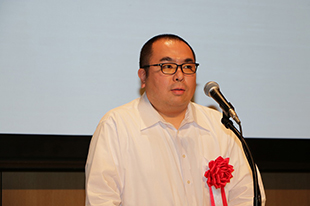 The 15th Asia Pacific Research Prize (Iue Prize) “Commendation” winner:
The 15th Asia Pacific Research Prize (Iue Prize) “Commendation” winner:
Dr. So Hoshino
Title of Dissertation :
“Religious Activities of Brazilians in Japan and Immigrant Support by Churches in Japan: the Cases of Roman Catholicism, Pentecostalism and Spiritism”

- Dr. So Hoshino
-
- Career -
So Hoshino specializes in the sociology of religion. After graduating from Keio University in 2005, he entered into the third year of an undergraduate course at Taisho University in the same year, and graduated from the university in 2007. He completed a master’s program in 2010 and a doctoral program without obtaining a degree in 2013, in a graduate school at Taisho University. In 2016, he received a PhD in advanced literary studies. Since 2013, he has served as a part-time lecturer at Taisho University and other academic institutions.
- Summary -
Since the Immigration Control and Refugee Recognition Act was revised in 1990, we have accumulated masses of studies of Brazilian residents in Japan. However, no preceding studies have closely examined their religious activities, which play an important role in actual processes toward multicultural coexistence. This dissertation aims to fill this gap.
Since 1990, Catholic churches in Japan have actively supported Brazilian immigrants in Japan. On the other hand, Brazilian Catholics living in Japan have organized themselves through reproducing the same feasts they celebrated back home, as well as through using the leverage of their original religious movements in Japan. As a result, the Catholic churches provide “places” for Brazilians in Japan to create networks based on shared beliefs, leading to more constant larger-scale communities serving as a driving force of their organization, compared with secular association activities.
Meanwhile, Protestant churches, whose believers are rapidly increasing in number in Brazil, also have come to Japan in large numbers to establish branches. While providing “places” for Brazilian believers to experience closed ethnic spaces, these branch churches collaborate with Japanese Protestant sects. In this process, Brazilian residents in Japan acknowledge themselves to be—and Japanese sects also view their Brazilian fellows as—“advance guards for revival.” Churches thus come to serve as “places” where those who suffer deprivation can feel positive about themselves.
When society experiences major changes, exemplified by the 2008 financial crisis triggered by the bankruptcy of Lehman Brothers and the Great East Japan Earthquake, these churches not only serve as “places” for building networks of mutual aid across the border between believers and non-believers, but also show their own effectiveness as social capital, with which local governments and grass-roots activities try to cooperate. Moreover, growth of the second generation of Brazilian immigrants offers the Japanese Christian world grounds for hope in ensuring new believers, though it was expected that the Christian world in Japan would be otherwise forced to decline due to the aging population combined with the decreasing birthrate. In all these senses, these churches can be nodes of “border crossers” and “those who resonate with them,” and be viewed as “places” for incubating new networks.






